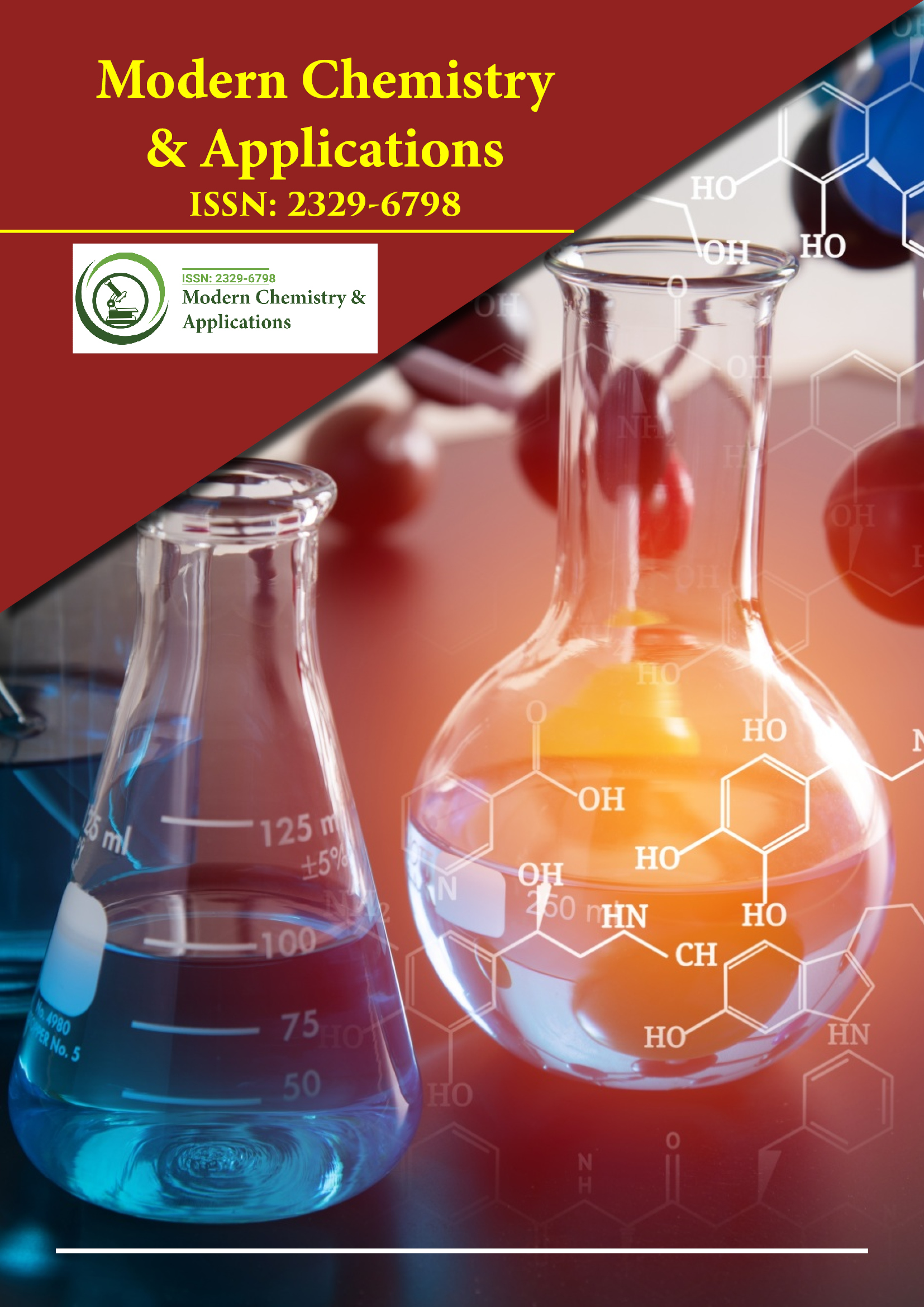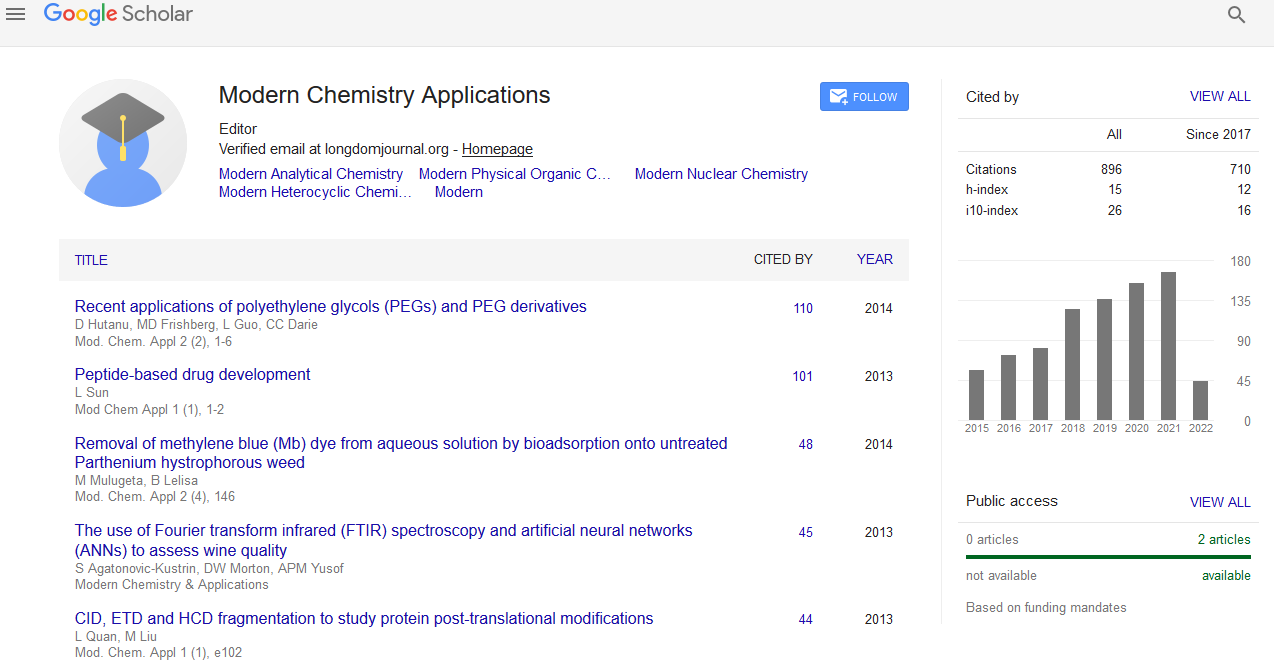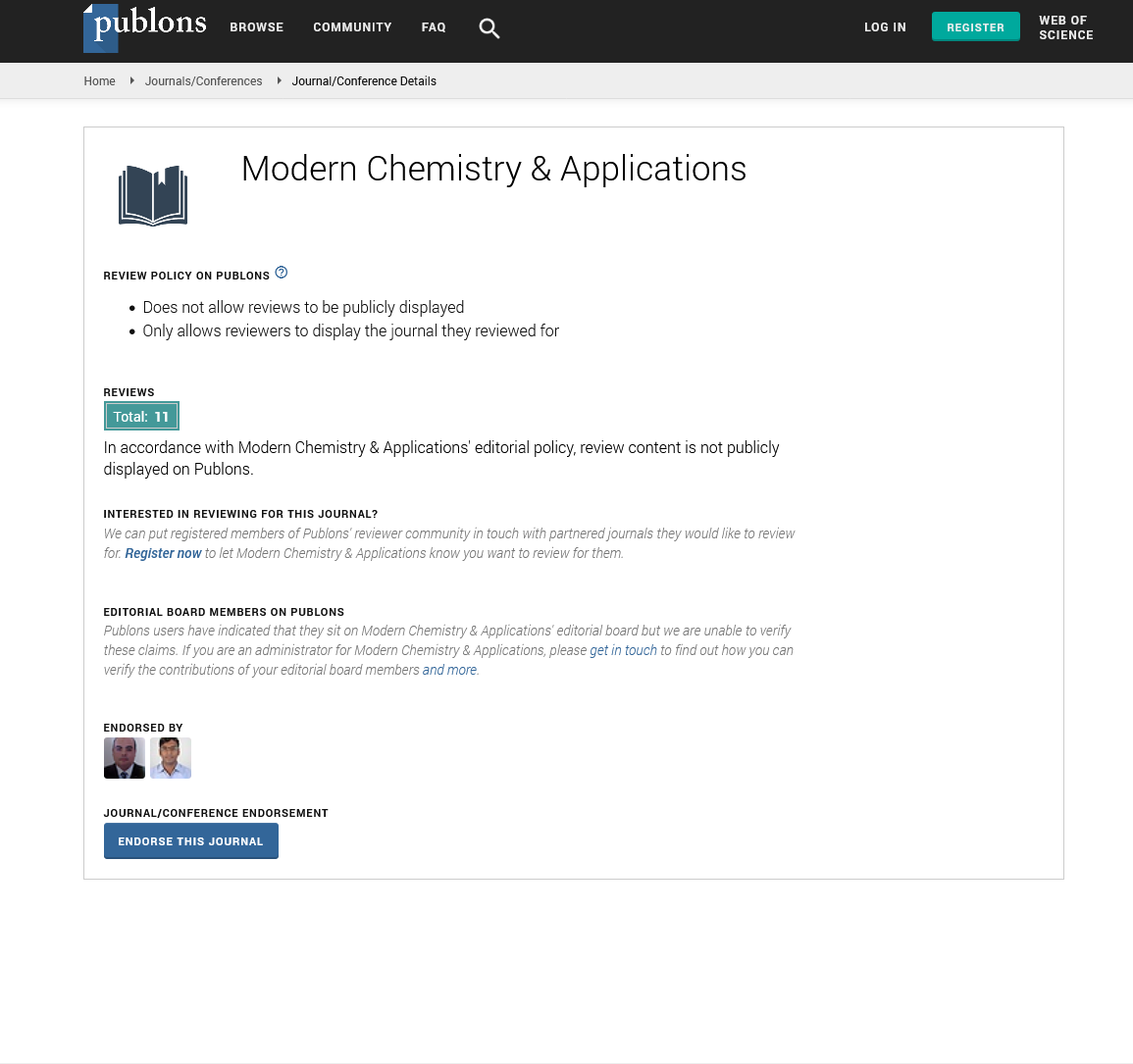Indexed In
- Open J Gate
- JournalTOCs
- RefSeek
- Hamdard University
- EBSCO A-Z
- OCLC- WorldCat
- Scholarsteer
- Publons
- Geneva Foundation for Medical Education and Research
- Google Scholar
Useful Links
Share This Page
Journal Flyer

Open Access Journals
- Agri and Aquaculture
- Biochemistry
- Bioinformatics & Systems Biology
- Business & Management
- Chemistry
- Clinical Sciences
- Engineering
- Food & Nutrition
- General Science
- Genetics & Molecular Biology
- Immunology & Microbiology
- Medical Sciences
- Neuroscience & Psychology
- Nursing & Health Care
- Pharmaceutical Sciences
Perspective - (2024) Volume 12, Issue 4
Advanced Catalysis for CO2 Reduction: From Laboratory to Industrial Applications
Emily Johnson*Received: 28-Nov-2024, Manuscript No. MCA-24-28409; Editor assigned: 02-Dec-2024, Pre QC No. MCA-24-28409 (PQ); Reviewed: 16-Dec-2024, QC No. MCA-24-28409; Revised: 23-Dec-2024, Manuscript No. MCA-24-28409 (R); Published: 30-Dec-2024, DOI: 10.35248/2157-7560.24.12.483
Description
The challenge of mitigating the impact of greenhouse gases on the environment has led to an intensified focus on carbon dioxide reduction technologies. With CO2 being one of the primary contributors to global warming, developing methods to capture and convert it into useful products has become a topic of great interest. The reduction of CO2 has the potential to address both energy and environmental issues. Catalysis plays a central role in transforming CO2 into more valuable compounds and innovations in this field are progressing from research laboratories to larger-scale applications. Catalysts are substances that accelerate chemical reactions without being consumed in the process, making them vital for efficient CO2 reduction. Early efforts were mainly focused on understanding the reactions at a fundamental level and now the research has expanded to include various materials and systems that could be implemented outside of academic settings.
Scientists have been experimenting with different catalysts, including metals, metal oxides and organic compounds, each with varying degrees of effectiveness. Among the materials under investigation, copper-based catalysts have shown considerable promise. Copper’s ability to produce a wide range of products makes it an attractive candidate for CO2 reduction. By adjusting the structure of copper at the molecular level, researchers have been able to optimize its performance, increasing both efficiency and selectivity towards specific products. Innovations like these have the potential to make electrochemical CO2 reduction viable for large-scale operations, providing a potential solution for reducing atmospheric CO2 while also generating useful fuels and chemicals. Another important aspect of CO2 reduction technologies is the role of heterogeneous catalysis, which involves solid catalysts interacting with reactants in gaseous or liquid phases.
Transition metal catalysts, like those made from nickel, platinum and palladium, have been identified as effective for various CO2 transformation reactions. These metals can facilitate the conversion of CO2 into carbon monoxide, a valuable intermediate for the production of synthetic fuels. The challenge with these catalysts, however, lies in balancing their activity with stability over extended periods. Ensuring that catalysts maintain their efficiency without deteriorating due to the reaction environment is essential for scaling up these processes. The role of reaction conditions-such as temperature, pressure and the presence of solvents-cannot be understated when considering the overall effectiveness of CO2 reduction processes. High temperatures and pressures can improve reaction rates but also present challenges in terms of energy consumption and material degradation. Researchers are working to optimize reaction conditions so that CO2 reduction can be carried out efficiently without excessive energy input.
Some experimental setups even aim to use renewable electricity from solar or wind sources, thus aligning the process with sustainable energy systems. To advance these processes from laboratory-scale demonstrations to industrial applications, there must be a significant push toward scalability. Industrial applications require not only effective catalysts but also systems that can handle large volumes of CO2 while maintaining longterm performance. One challenge is the durability of catalysts under continuous operation. Many catalysts are prone to degradation over time, which could hinder their usefulness in industrial settings. Addressing this challenge is critical for ensuring the reliability of CO2 reduction technologies in largescale operations. Beyond the technical aspects, economic considerations will also play a significant role in the commercialization of CO2 reduction technologies. The cost of catalysts, energy input and the complexity of reactor systems must be considered to ensure the feasibility of these processes. Government policies, subsidies and investments can help alleviate some of these financial burdens and provide incentives for companies to develop and deploy CO2 reduction technologies at scale.
Citation: Johnson E (2024). Advanced Catalysis for CO2 Reduction: from Laboratory to Industrial Applications. Modern Chem Appl. 12:483.
Copyright: © 2024 Johnson E. This is an open access article distributed under the terms of the Creative Commons Attribution License, which permits unrestricted use, distribution, and reproduction in any medium, provided the original author and source are credited.


